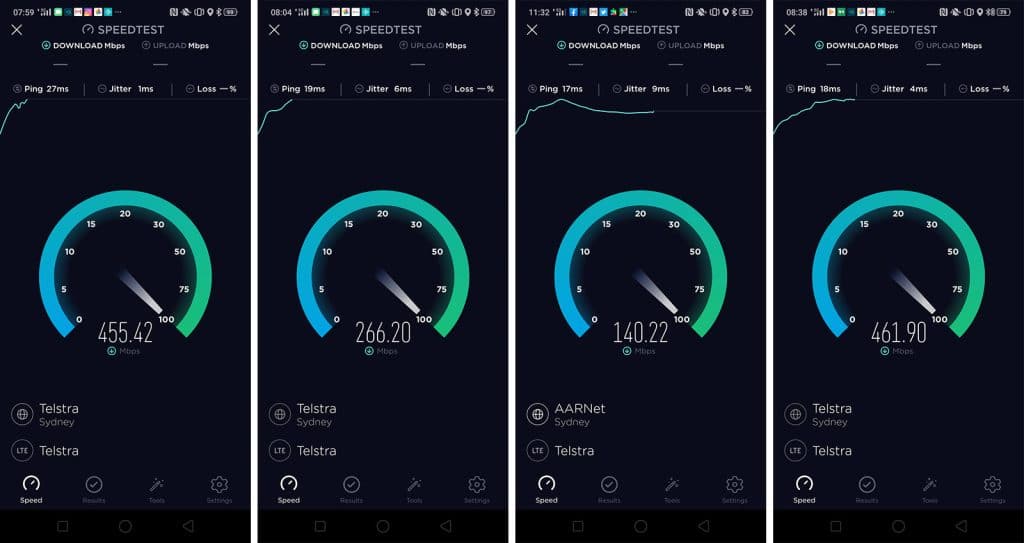The next generation of mobile technology is here, but is it something worthwhile, or should you wait?
New technology tends to incur an early adoption tax of quality and price, and that’s something that tends to remain consistent throughout life.
The simple truth about getting in first with new tech is that it’s not only expensive, but can also be a little buggy, as manufacturers work to make the first version the best, but then subsequently learn even more as time goes on. That means while the first examples of any new piece of technology could be great, later versions are likely to be even better, and usually less expensive, as the cost drops and the tech trickles down into lower price points.
That’s certainly true in computers, and it happens in phones, as well, with a budget or mid-range 4G phone being faster than the initial 4G phones that launched several years ago.
Ultimately, it will take time, but eventually the third, fourth, fifth, and eighth iterations will end up being better than the first.
But you pay for being that first, and some people want to be on the bleeding edge. Some have to be on the bleeding edge.
In 2019, 5G is that bleeding edge, as the mobile connection technology we’ve relied on for years gets a faster follow-up, and 4G jumbos to 5G.
Ahead by one letter, 5G is faster, and can offer more bandwidth for video conferencing, online games, telehealth, and much more.
Much of what will make 5G extraordinary is coming later down the track, so what about right now: is 5G worthwhile at launch in 2019?
5G in 2019
At its launch, 5G may not be the amazing speed demon technology you’d hope it would be. In fact, through our testing, 5G hasn’t really been all that amazing.
Technically, 5G is capable of speeds that go over the 4G mark, which tend to top out at 1.4 gigabits per second, or 1400Mbps. In comparison, 5G should be able to hit 1800Mbps and higher, with the first handsets and mobile hubs capable of doing up to 2000Mbps.
These might just look like numbers, but to get to the actual megabyte counts, you have to divide by eight. In English, that means 1800Mbps is equal to 225 megabytes (MB) per second, while 2000Mbps is 250MB/s.
Or to put it simply, fast.
In comparison, the high-speed 100Mbps National Broadband Network can hit 12.5MB per second at its maximum.
To get those amazingly fast 5G speeds, you need two things: a 5G device, and a 5G network.
Getting the device is easy enough these days, with three available at launch on the Telstra 5G network: the Samsung Galaxy S10 5G, the Oppo Reno 5G, and the LG V50 5G.
That only leaves the network, and that’s where things get tricky.
In 2019, Telstra has launched its 5G network first, but the range of the 5G speeds is very small, and only covers small pockets of cities in Australia.
Inside those small pockets, the speed doesn’t appear to be wholly reliable, and testing in two of the areas for Telstra’s 5G network in Sydney’s CBD — Broadway and Milson’s Point — it’s pretty clear that the 5G network isn’t quite the speedy system Telstra is advertising it to be.
As an example, Pickr has been reviewing the Oppo Reno 5G recently and tried several speed tests, and neither location hit far into what 4G was capable of doing.
Comparing it to what other reviewers have been seeing, it raises a significant question as to whether 5G is even ready for consumers, particularly those not living inside the Telstra building where the majority of demos appear to be conducted.
That’s not to say that 5G is necessarily bad, but rather that it’s not ready at the moment, and your use case may vary.
5G in 2020 (and beyond)
A 4G network is still very useful, and will continue to be so for quite some time. The current technology of 4G isn’t going anywhere, and you’ll continue to see 4G phones for several years.
In fact, 5G phones also include 4G technology, allowing them to work on either network, as well as 3G, too.
And 5G will continue to get better across both the phone hardware and what the telcos deliver.
From 2020 onwards, you can expect more than the one carrier (Telstra) to provide 5G support in Australia, and more range from the telcos that launch it.
That will mean better support for 5G where ever you are, with phones defaulting back to 4G whenever 5G isn’t available. Remember that 4G isn’t exactly slow, so it shouldn’t be too far a drop when you can’t latch on to the super-fast 5G network.







